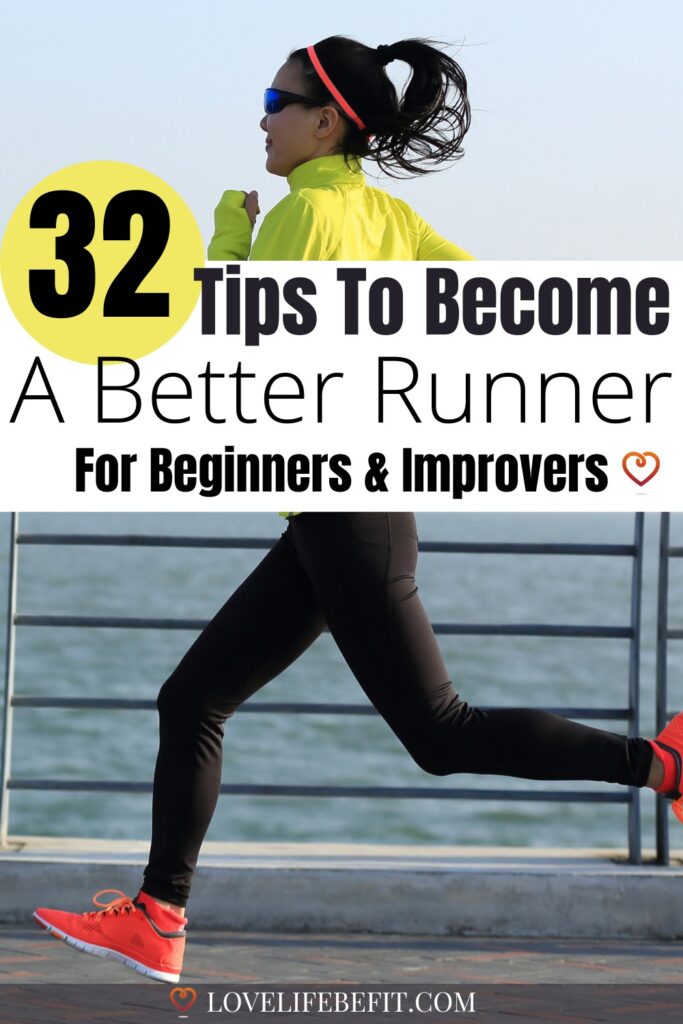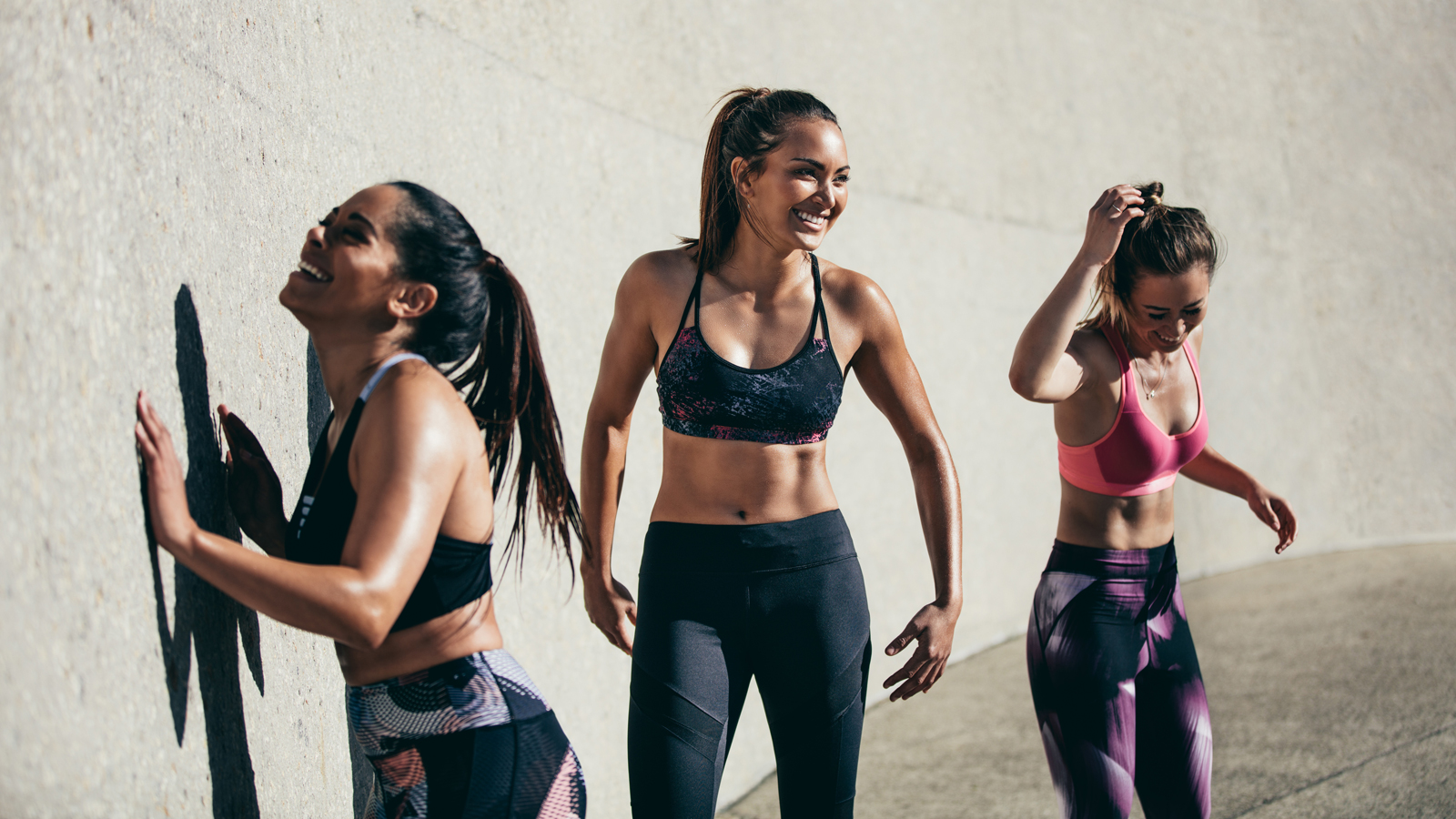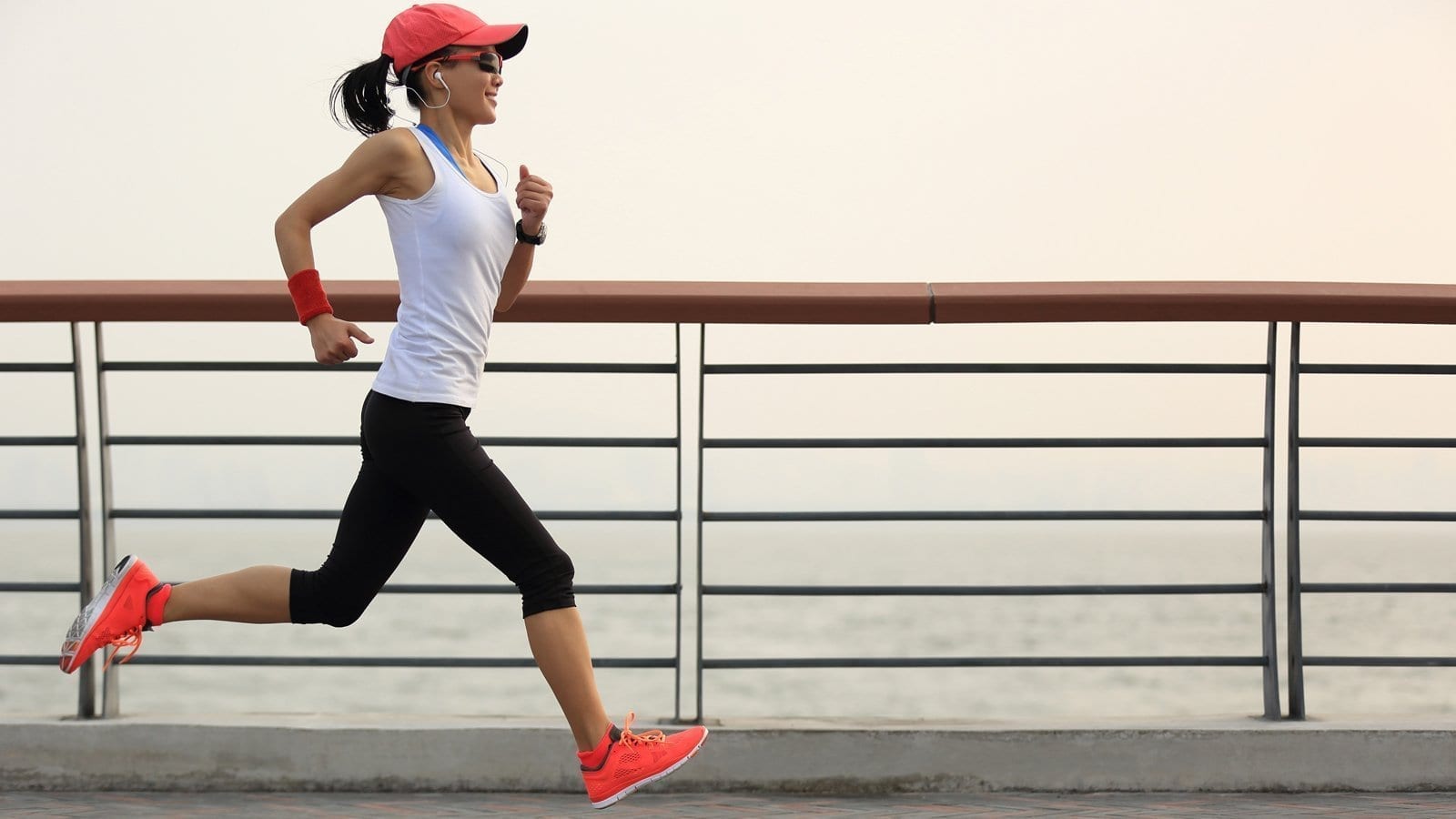How To Become A Better Runner (For Beginners & Improvers)
These tips for how to become a better runner cover everything from the basics of getting started to running tips and workouts that can help any runner improve their performance.
There are some little changes you can make that will improve your running quickly, in just a week or 2, but the biggest improvements will come from consistent running.
Decide what you’re going to do to improve as a runner and do it – week after week, month after month. Find your weaknesses and work on them!

How To Become A Better Runner For Beginners
Everyone has a different idea about what it means to be a better runner. Is it running a marathon or running a faster 5K?
If you’re a beginner runner, it’s best to spend your first 6-12 months running consistently. Slowly build distance and you’ll find your speed improves naturally with regular running.
Speed training can come later when you’ve built a solid running base. Do too much too soon and there’s a risk of running injuries.
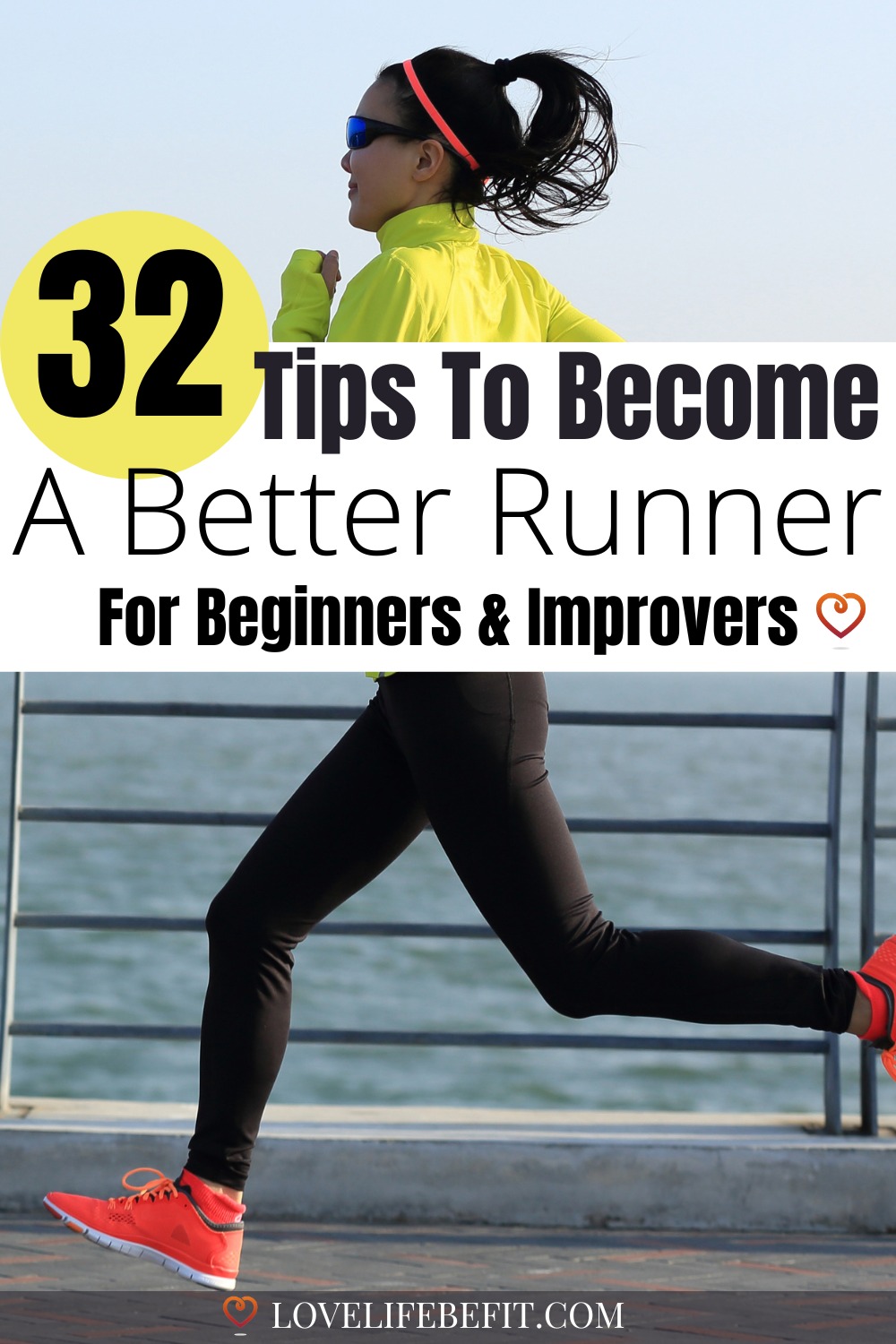
These tips will help you become a better runner when you first start running:
#1 Run 3 Times A Week
It’s hard to see any improvement if you only run once or twice a week. Run regularly and consistently to get results.
Three times a week is the sweet spot for beginner runners. You can build up to 4 or 5 times a week but always make sure you take sufficient rest days to let your body recover between sessions.
You’re new to running and your body is still building the strength it needs to be a resilient runner – so don’t overdo it.

#2 Don’t Run Too Far Or Too Hard
Pushing yourself to the point of exhaustion every time you go for a run won’t do you any good. The aim is to feel good when you’re running.
Challenge yourself but don’t make every run about running further or faster. You’re building a running base of miles at an easy to moderate pace.
#3 Set Running Goals
All runners benefit from setting running goals, even beginners. Your first goal could be as simple as running a mile without stopping.
When you complete one goal, set another. Fitness goals are a great way to keep you motivated and improving as a runner.
#4 Follow A Training Plan
A runner’s training schedule goes hand in hand with setting running goals. It tells you what you need to do every day to hit your targets.
Find a training plan that matches your aspirations. Choose from our free beginner-friendly plans from Couch to 5K to Couch to Half Marathon or get a customized plan from a qualified running coach. Just make sure the running coach you use has a clear idea of your aspirations and current fitness level.
#5 Join A Running Group
Training with other people is the best way to become a better runner – especially when you’re a beginner. Find a local running club or running group. It’s a great way to stay motivated and learn from other runners.
Most running clubs welcome beginners, so don’t be afraid to get in touch. Meetup can be a good way to find free running groups.
#6 Try Fartlek
Fartlek or speed play is a way of introducing interval training to your workouts. It’s less intense than most speed workout sessions because you’re running to feel and you’re less likely to push too hard.
It’s unstructured speedwork: you’re mixing in periods of faster running with easy to moderate running without any rests.
Warm up properly by running at an easy pace for 10 to 15 minutes, then let your body take over. Run fast until you naturally slow down. Recover and then try running fast again. Repeat several times and finish with a slow jog.
Related post: 29 Running Tips For Beginners

Running Shoes
Running in the wrong shoes can quickly sabotage your plans to become a better runner. It’s a shame, but many new runners are deterred from running simply because they pick up injuries from running in unsuitable shoes. Here are a few tips to help you choose your running shoes:
#7 Gait Analysis
The best running shoes will always be the most comfortable pair. That said it helps when you’re choosing your first pair of running shoes to get your gait analysed.
Many specialist running stores offer a free gait analysis service and can tell you if you pronate, supinate, or have a neutral foot strike. This will help you find the most suitable shoes for your running style.
#8 Choosing Running Shoes
Always try on as many pairs as possible. Shoes need to be comfortable and supportive.
Make sure they’re suitable for your weight, your running gait, and your intended running surface – road and trail running shoes are very different.
If possible, try out your shoes before you buy. Some stores have a treadmill you can use to make sure the shoes are a good fit for your feet.
Related post: Best Running Shoes For Overweight Runners
#9 Replace Your Shoes Regularly
Unfortunately running shoes wear out far too quickly. Aim to replace your shoes every 500 or so miles.
One tip is to rotate your running shoes: have two pairs on the go at the same time, one pair older than the other. This way you’ll quickly notice the difference when the older pair of shoes starts to deteriorate.
When there’s less bounce, or your legs feel achy after running, it could be time to buy new shoes.
Strava has a handy feature for checking how many miles you’ve run in your shoes and will notify you when it’s time to buy a new pair!
#10 Invest In Good Running Socks
Those tatty cotton sports socks from the bottom of your drawer will do nothing for your running. Invest in some proper running socks.
Good running socks will protect your feet and stop your foot from sliding around inside your shoe. This improves your running and helps to prevent blisters.
Related post: Best Socks For Runners (Are Running Socks Worth It?)
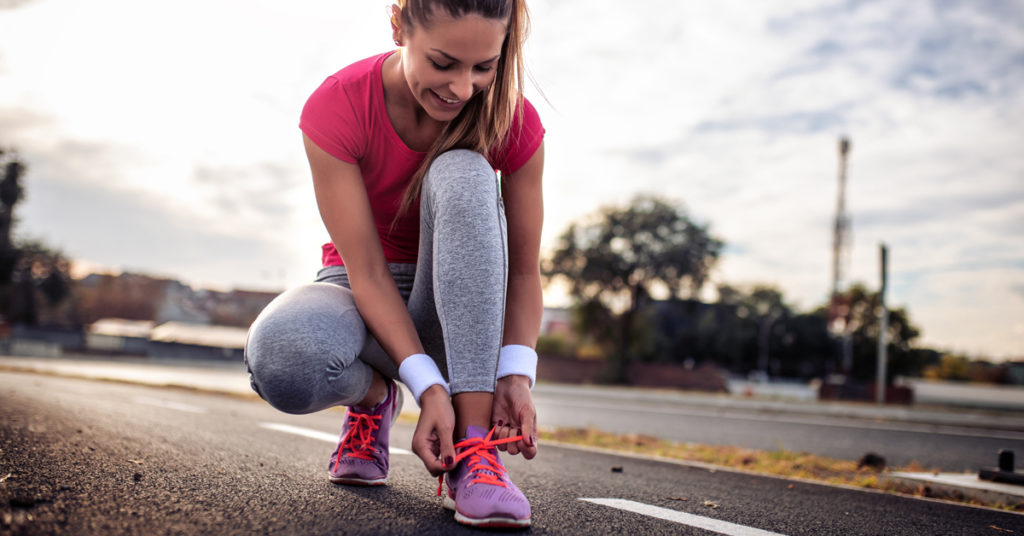
Improving Running Form
Alas, running style may come naturally as a child but by the time we’re adults we pick up all sorts of bad habits and sometimes completely forget how to run.
Running form is unique to you and if you’ve been running for a long time, it can be best to take the “if it ain’t bust don’t fix it” approach.
However, if you’re a beginner runner, here are a few tips you can try to improve your running technique:
#11 Run Tall And Look Ahead
Avoid slouching when you run. It’s less efficient and leads to all sorts of back issues.
Instead, stand tall, engage your core muscles to stop your hips from sagging, and fall into running by leaning forward slightly from your ankles. There should be an imaginary straight line from the top of your head to your hips.
Keep your eyes focused 10 to 20 feet ahead and avoid looking at your feet. This tip is essential if you want to run fast on uneven trails.
#12 Use Your Arms
So many beginner runners don’t know what to do with their arms when they run. Don’t leave them hanging like a dead weight alongside your body!
Bend your arms at roughly 90 degrees and find a natural arm swing. Keep your shoulders down, not up and around your ears. Relax your arms, swinging your arms back as your legs drive forward.
#13 Land With Your Feet Under Your Body
If you watch elite runners, they typically have long stride lengths but they still land with their feet under their body. Beginner runners taking long strides tend to over-stride and slam their heels into the pavement.
The key to being an efficient runner is keeping your hips forward and landing with your full weight on your flat foot or mid-foot. If you find your landing hard on your heels try shortening your stride length.
#14 Running Cadence
A lot of running form issues come from running with a low cadence. Cadence is the number of steps you take per minute as you run.
Aim for at least 170 steps per minute (some coaches suggest 180 steps per minute). Cadence will vary depending on your height, terrain, and running speed.
Measure your cadence at different speeds and see if it’s something you can improve. Shorter faster strides can be better for injury prevention.
#15 Running Drills
Adding drills to your running will help with your running technique for both beginners and improvers. They’re a good way to warm up before intense interval sessions.
High knees, butt kicks, carioca, A-Skip, and B-Skip are all helpful drills to work into your sessions.
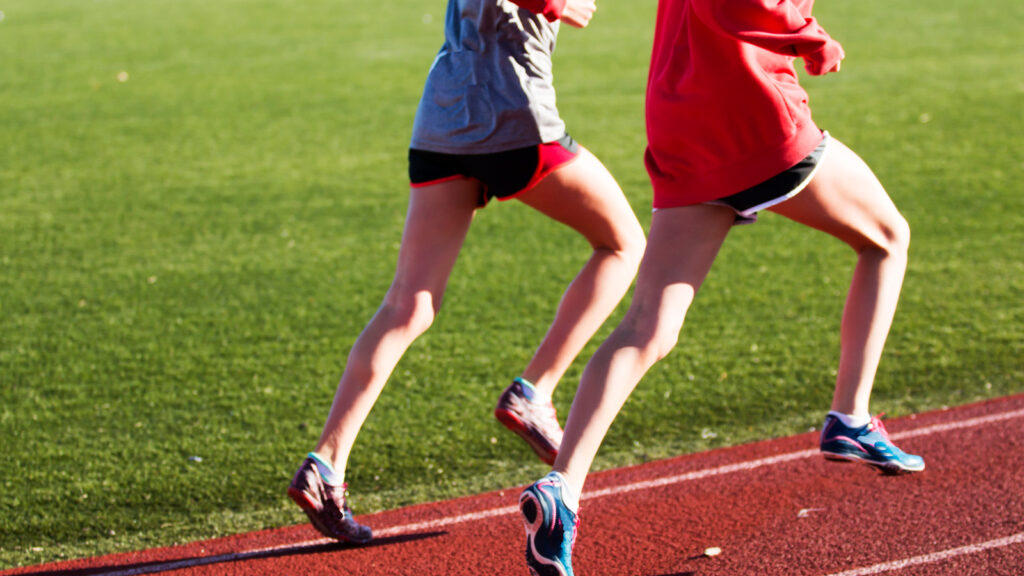
Having The Right Mindset
Back in my twenties, I hung out with an exceptional group of runners. Between us, we accounted for most of the endurance trail records in the UK.
It didn’t feel like an elitist group – most of us were friends from the same running club. We just fed off each other, inspired and supported each other. Our exceptional training patterns became normal. You can use the same approach to improve as a runner.
#16 Have A Winning Mindset
To improve your times, win races, or break records you have to know what success looks like. What are you trying to achieve? What training are other runners doing to get the results you want?
If you want to be a better runner, act like a better runner. Hang onto the coattails of the top runners in your group or club. Do what they do.
#17 Don’t Set Limiting Beliefs
There’s this view that top runners are naturally talented. That the times and distances they manage to run are impossible for the average runner.
That talent is just a small part of their success. It’s what happens behind the scenes, the hard work and consistency that gets results.
Not all good runners are exceptionally talented, or at least not in the way you’d expect. Sometimes that natural talent is just grit and determination. Getting up when you’re tired for an early morning run, fitting in your strength training session when you’ve had a busy day…good runners prioritize their training.
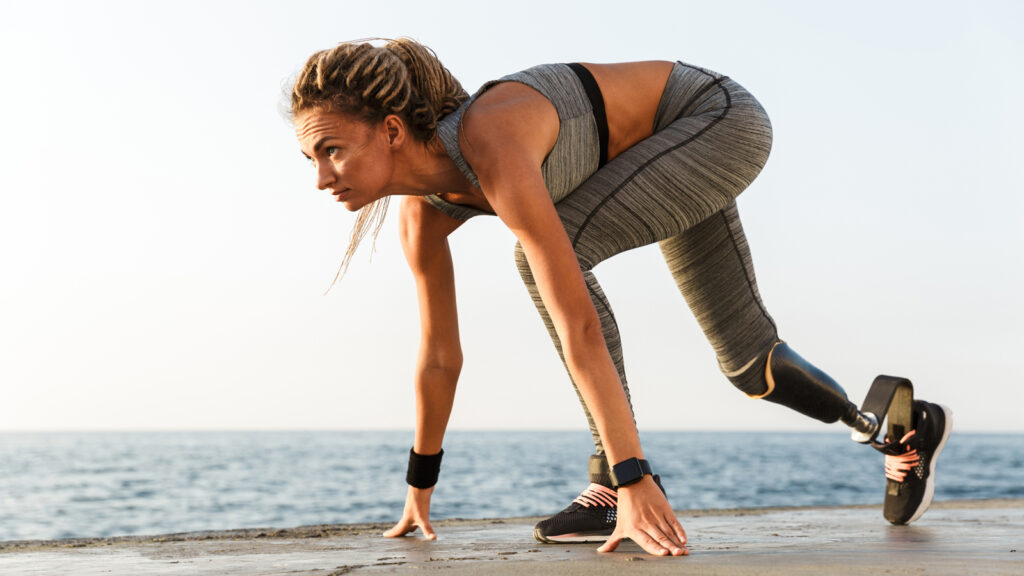
Improving Your Runner’s Body
No one starts running with the perfect body shape. Some may be more suited to running than others but the perfect running body can still take years to develop. Gradually build the strength and muscles you need to train hard without getting injured.
#18 Avoid The Comfort Zone
If you always run at the same pace and cover the same distances, without challenging your body, you get stuck in your comfort zone. Your body’s kicking back and going through the motions without getting stronger.
Goal setting and a training plan can help you break the cycle. It can be a big help working with a running coach who’s aligned with your goals and can help you work on your weaknesses.
#19 Strength Training Is Essential
Strength training should be part of every runner’s program regardless of experience level. Strengthening your muscles will help you stay injury-free and will help you build a body capable of coping with tough training sessions.
Building strong core and leg muscles (quads, glutes, hamstrings, and calf muscles), and working on weaknesses such as muscle imbalances will make you a faster runner.
Strength training can be weight training in a gym or working with dumbbells and resistance bands at home. Start with these bodyweight exercises for runners.
#20 Improve Your Nutrition
Running is a great way to burn calories. Many people start running for weight loss, then get the running bug and want to improve as a runner. But it’s still possible to be a runner and carry a few extra pounds. If you’re running in your comfort zone and overeating, you can even put on weight.
To get a better runner’s body, think about food as nutrition. Eating healthy food full of fiber, vitamins, and minerals will provide all the nutrients you need for your running and help you lose weight.
Fill up on lean protein, whole grains, vegetables, some fruit, and healthy fats plus a few worthwhile supplements. These supplements may help endurance runners.
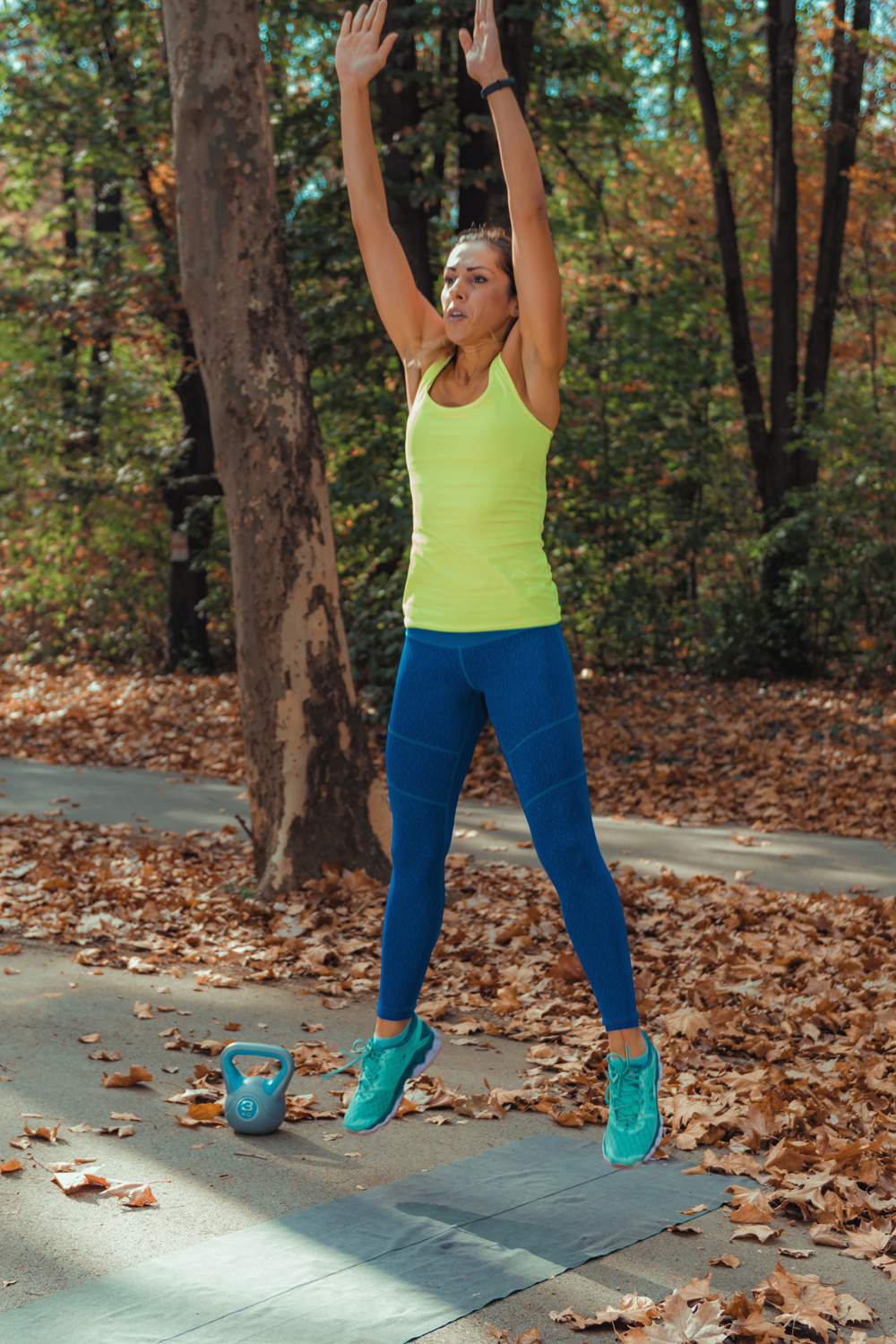
How to become a better runner without running
Of course, you actually have to run to get better at running but there are a lot of things you can do that don’t involve running.
#21 Improve Your Mobility
We’ve already covered strength training but improving your mobility is just as important. Having good mobility helps improve your running technique, and prevents injury.
Yoga for runners, hip flexor stretches and dynamic stretching will help to improve flexibility and range of motion.
#22 Try Cross-Training
Cross-training is a great way to get improve your fitness and at the same time get a rest from pounding the pavement. Find out more about why you need cross-training and how it will help your running in this post: The Best Cross Training For Runners (And Why You Need This).
#23 HIIT Training Workouts
Adding HIIT training workouts in the gym can improve your cardiovascular endurance and make you stronger. HIIT stands for High Intensity Interval Training and it’s an effective way to boost your fitness level.
Fast-paced exercises such as jumping jacks or pushups for 30 to 60 seconds with short rest periods keep the intensity high. These challenging sessions may just be 10 to 15 minutes in length but they can make a big impact on your fitness.
#24 Plyometric Workouts
These are jumping or hopping exercises such as box jumps, burpees, and squat jumps. They’re a great way to improve your explosive power and running speed.
Your technique is important. Always make sure you’re doing the exercises correctly and ease into these types of exercises. Build a base with static bodyweight exercises first and add plyometric workouts as you get stronger.
#25 Sleep Well
The physical and mental demands of running can take a lot out of you. You need to rest and recover.
Getting enough sleep is often overlooked in our fast-paced world. Eight or nine hours of sleep is ideal for runners. You may get by on less but adequate sleep can make a big difference to your performance.
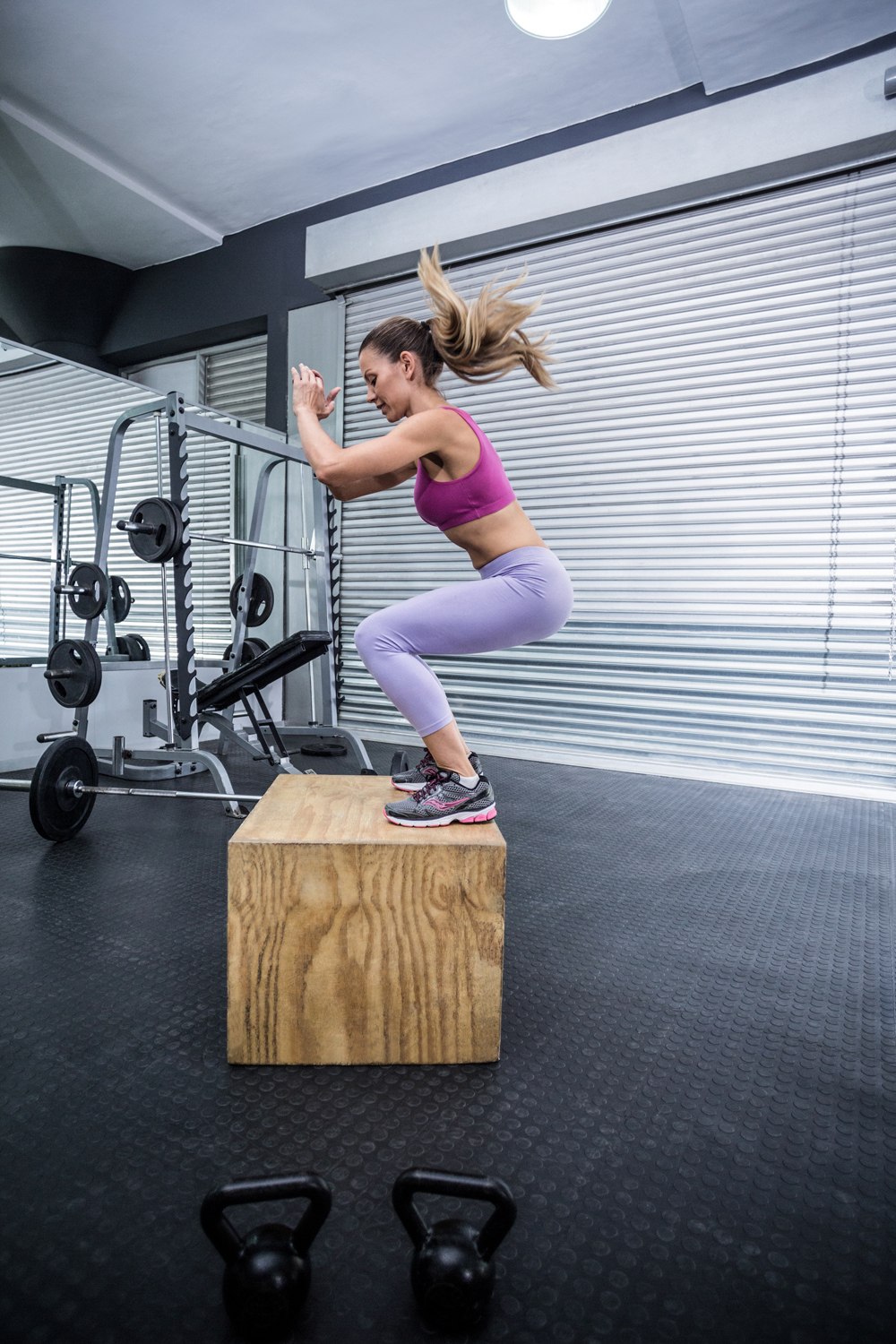
How to run better at long distances.
The main mistake people make when they want to get better at long-distance running is they only focus on volume and distance. Speed workouts are still important if you’re running a half marathon or longer distances. If you always train at the same speed you’ll never run faster over longer distances.
#26 Strides
Strides improve your form and mechanics. It’s often best to include them at the end of a short training session when you’re fully warmed up but not tired.
The aim is to accelerate quickly from a slow pace to 95% of maximum speed then slow down. The focus is on fast leg turnover and strides should feel effortless. The distance covered is 50 to 100m.
#27 Interval Workouts
Intervals help to build speed. The length of the intervals will depend on your training plan and goals. Typical distances are 400m repeats, 800m repeats or even mile repeats for marathon training.
The rest period should be long enough for your heart rate to drop back down before you start the next interval. To get the most out of your sessions log your interval run times. As your training progresses you should notice gradual improvements.
#28 Tempo Runs
Tempo runs are continuous runs at a sustained effort, typically for 20 to 30 minutes. If you’re training for a 10k or half marathon, then running at your goal race pace is an excellent way of getting used to running at this speed. These runs will feel tough but become easier as your fitness level improves.
#29 Hill Workouts
Hill reps are short, sharp bursts of effort up a steep incline followed by an easy jog or walk recovery downhill. Running hills will help to build leg strength and improve your running technique.
Start with shorter hills and once you’re strong enough increase the length of the hill reps or the number of repetitions.
Related post: How To Run A Mile Faster

Recovery And Injury Prevention
It’s only possible to be a better runner if you take care of your body. Getting injured is the main reason some people never improve at running.
#30 Listen To Your Body
If something doesn’t feel right cut your training session short and if the niggle persists, get it checked out by a medical professional.
It’s always best to act fast and aim for injury prevention than ignore a problem until it’s a serious injury.
#31 Take Rest Days
If you’re always running on tired legs it’s hard to improve as a runner. Make sure you have adequate recovery days. These can still be active rest days such as an easy walk or a gentle yoga session but it’s best to have a complete rest from training at least one day a week.
#32 Adopt The 80/20 Rule
Often beginner runners believe they should always be running as hard as possible but slow recovery runs are just as important. The 80/20 rule is that 80% of your miles should be at an easy pace and just 20% at a faster pace.
For example, if you’re training for 200 minutes a week, 40 minutes will be dedicated to tempo runs and speed workouts, the remaining time will be easy running.
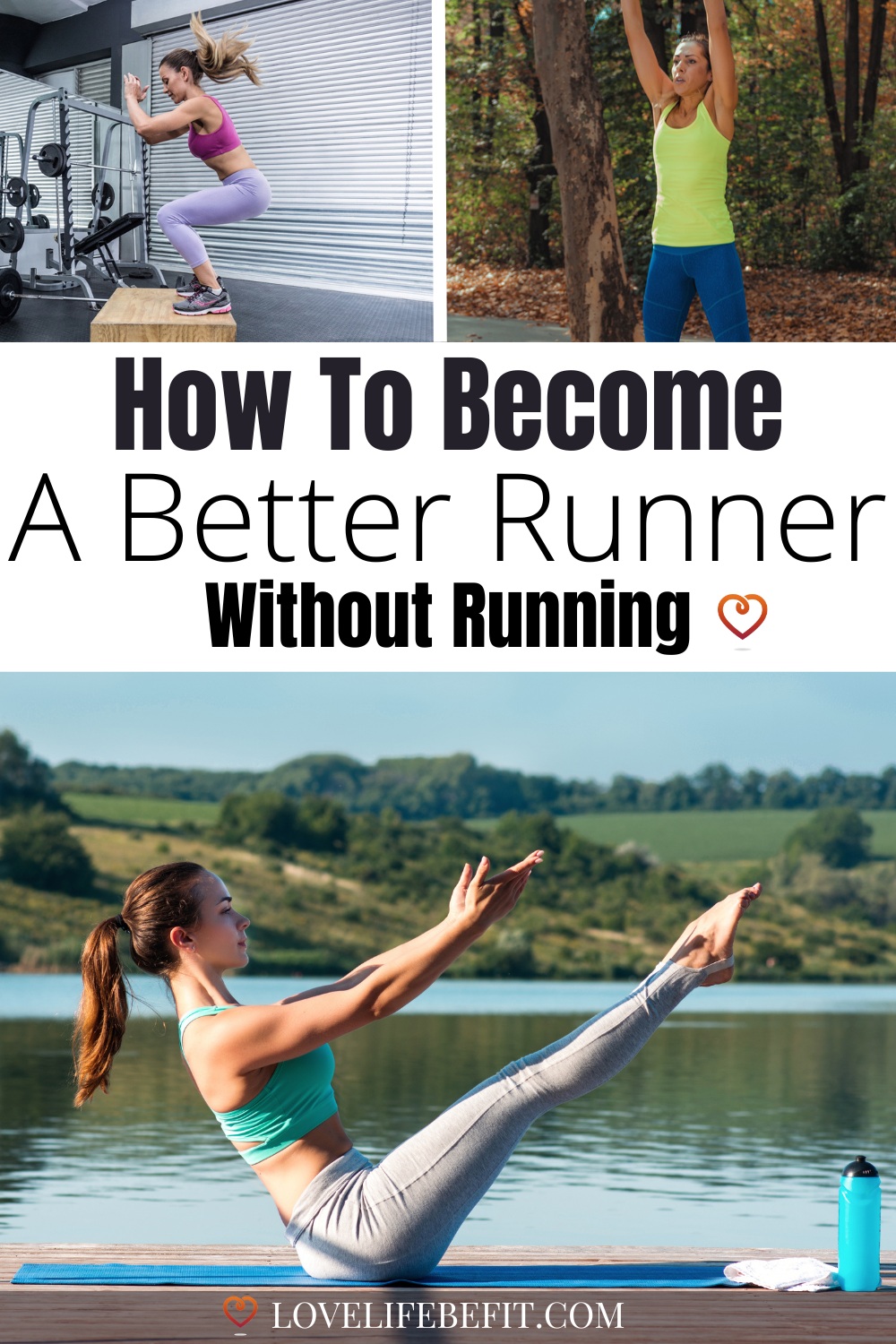
Thoughts From Love Life Be Fit
It’s not always the best runner who wins a race. Pacing, fuelling, wearing the right kit…these all add marginal gains. For example, in a road marathon, drinking from a feed station without losing running speed is a skill you can practice and learn.
I’ve learned over the years that the best runners aren’t always the most gifted. Talent only takes you so far… the runners who rise to the top back up their gifts with hard work and training smart. Better runners overcome their self-limiting beliefs and follow logical steps to improve their running.
I’ve also known many runners who’ve never reached their full potential and that’s okay. Everyone has different reasons for running…enjoyment, being healthy, friendships… these are all good reasons to run.

